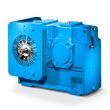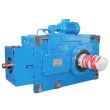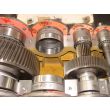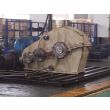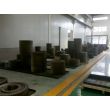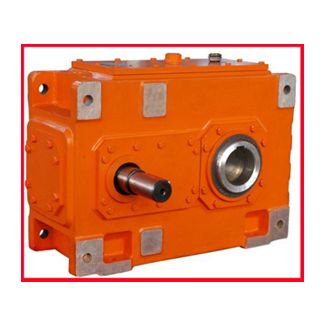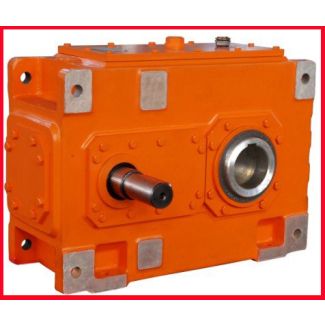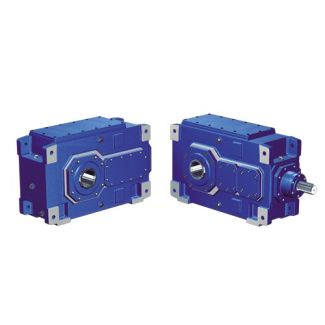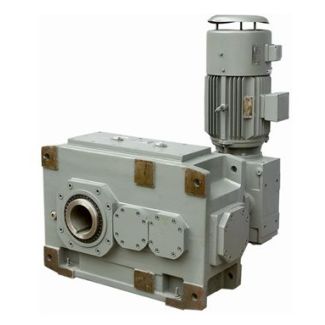H4-KH25-B cooling is requiredPG PGB x f PG Fan p Helical gearbox H4
In stock
SKU
H4-KH25-B
$254,571.43
Flender/Flender Gear Units/Helical gearbox H4
ion of the gear set [ BOSC6 ]. Whereas numerous studies on cylindrical gears have demonstrated clear correlation between contact geometry, stiffness and noise behavior [ BOSC6 ], [MOLL8 ], [WECK9 ], stiffness-related evaluation of the running behavior of bevel
geometry, stiffness and noise behavior [ BOSC6 ], [MOLL8 ], [WECK9 ], stiffness-related evaluation of the running behavior of bevel  gear sets has hitherto been conned to the macro-geometry [ BECK9 ]. One reason for this may be seen in
gear sets has hitherto been conned to the macro-geometry [ BECK9 ]. One reason for this may be seen in  the inadequate accuracy of the calculation methodsused to determine the tooth pair stiffness curves while taking the exact contactparameters into
the inadequate accuracy of the calculation methodsused to determine the tooth pair stiffness curves while taking the exact contactparameters into  account. Parametric vibration generation being of special impor-tance for all further dynamic considerations, new approaches to calculate dynamictooth forces, discussed in greater detail in Sect. 5.4, are currently being explored. Thus, greater importance has been devoted to the transmission error curve than tothe tooth pair stiffness curve in the noise optimization of bevel gear sets. comparison of the transmission errors of cylindrical and bevel gears shows that transmission error amplitude in bevel gears frequently reach values more than twiceas large as those in cylindrical gears [ WECK9 ], [WECK0 ], [WECK0 ]. Vibrations may also be generated in gear teeth by the surface structure of the tooth anks where waviness, essentially series of form deviations, is generallyregarded as separate case, being normally smaller than crowning, pressure andspiral angle and tooth ank bias deviations. Various measures may be employed to inuence the noise behavior of gear system. Currently, the most effective measures are primary active measures, .. reducing meshing vibration [ DIET9 ]. The next chapter describes possible methods and tools which can be used to systematically minimize noise excitationwhen designing bevel and hypoid gears. 5.2 Noise Excitation by Means of Gear Tooth Design 5.2.1 Optimizing the Macro Geometry Demands made on noise emission levels, especially for automotive gearing, are increasing as result of generally improved sound comfort in vehicles. Vehicle
account. Parametric vibration generation being of special impor-tance for all further dynamic considerations, new approaches to calculate dynamictooth forces, discussed in greater detail in Sect. 5.4, are currently being explored. Thus, greater importance has been devoted to the transmission error curve than tothe tooth pair stiffness curve in the noise optimization of bevel gear sets. comparison of the transmission errors of cylindrical and bevel gears shows that transmission error amplitude in bevel gears frequently reach values more than twiceas large as those in cylindrical gears [ WECK9 ], [WECK0 ], [WECK0 ]. Vibrations may also be generated in gear teeth by the surface structure of the tooth anks where waviness, essentially series of form deviations, is generallyregarded as separate case, being normally smaller than crowning, pressure andspiral angle and tooth ank bias deviations. Various measures may be employed to inuence the noise behavior of gear system. Currently, the most effective measures are primary active measures, .. reducing meshing vibration [ DIET9 ]. The next chapter describes possible methods and tools which can be used to systematically minimize noise excitationwhen designing bevel and hypoid gears. 5.2 Noise Excitation by Means of Gear Tooth Design 5.2.1 Optimizing the Macro Geometry Demands made on noise emission levels, especially for automotive gearing, are increasing as result of generally improved sound comfort in vehicles. Vehicle| Model Type | Helical gearbox H4 |
|---|---|
| Gear Type | Helical Gear |
| Weight (kg) | 11880.000000 |
| Ratio Range | 1 : 100…355 |
| Low Speed Output | Hollow shaft with spline acc. to DIN 5480 |
| Nominal Torque | 860000 Nm |
| Mounting Arrangements | Horizontal mounting position |
| Manufacturer | Flender Singapore Pte. Ltd. |
| Country of Manufacture | Singapore |
| Data Sheet & Drawings | H4-KH25-B cooling is requiredPG PGB x f PG Fan p Helical gearbox H4 |

